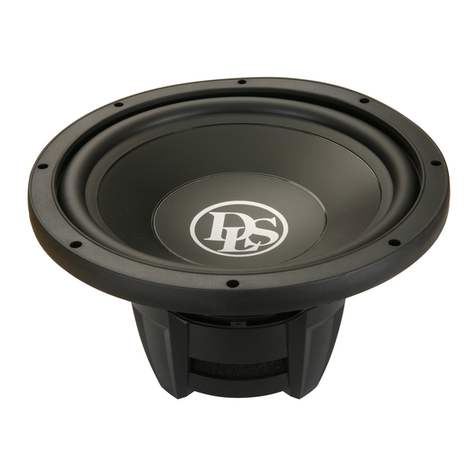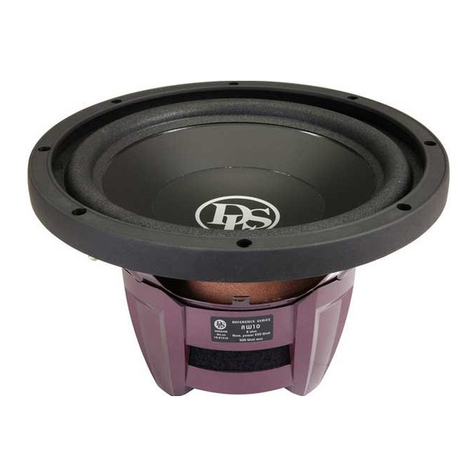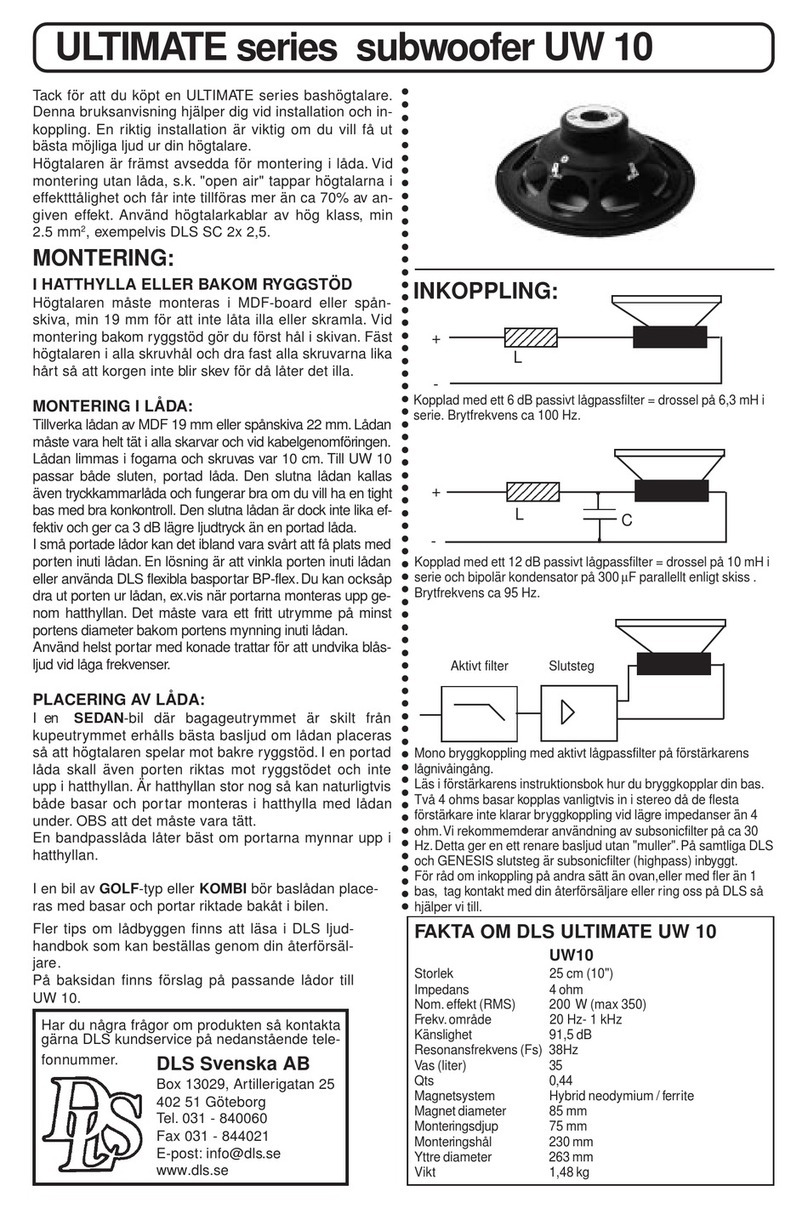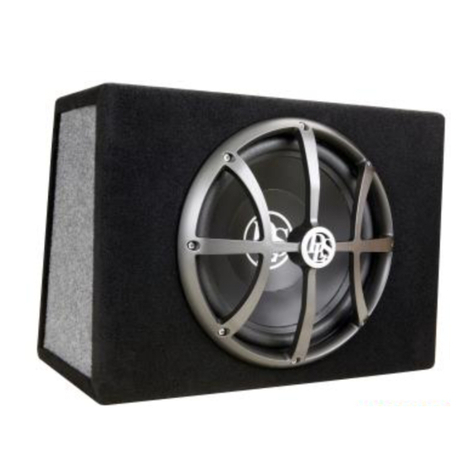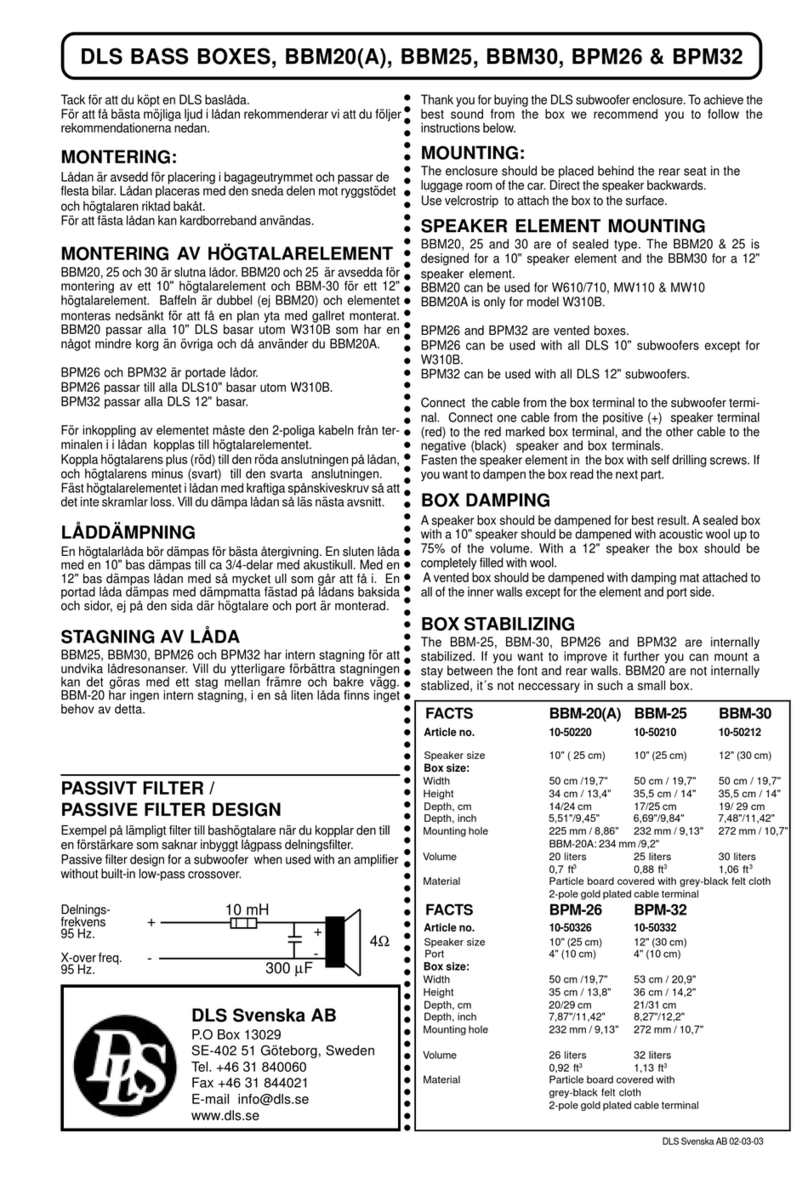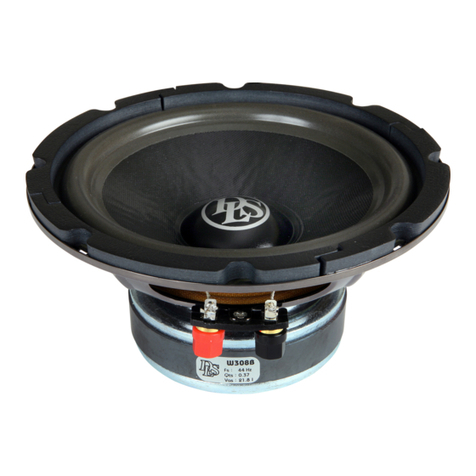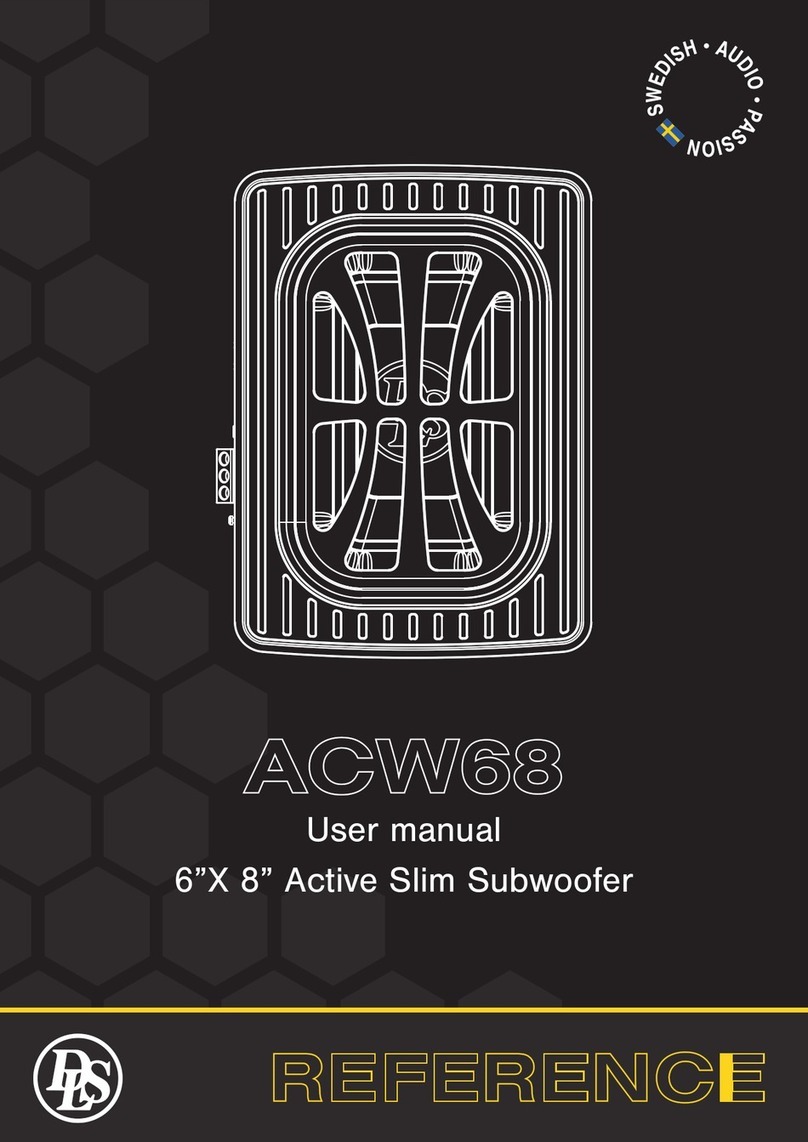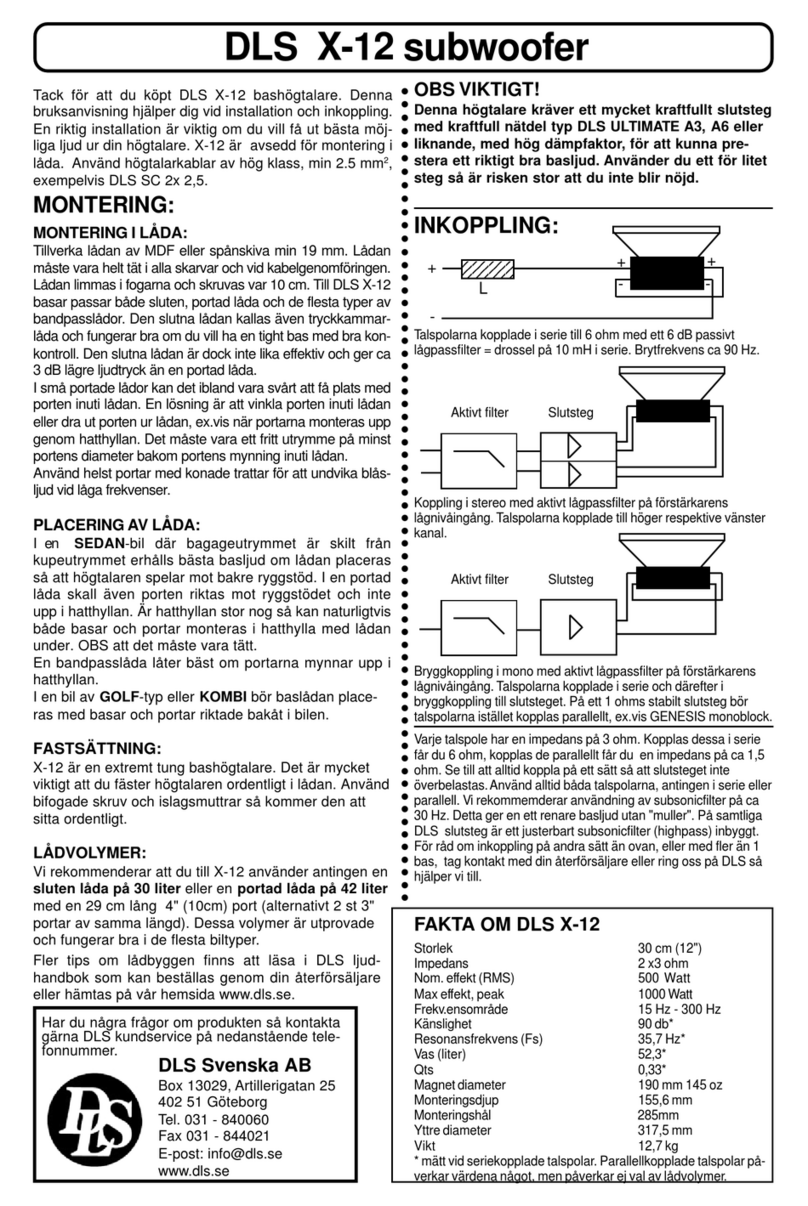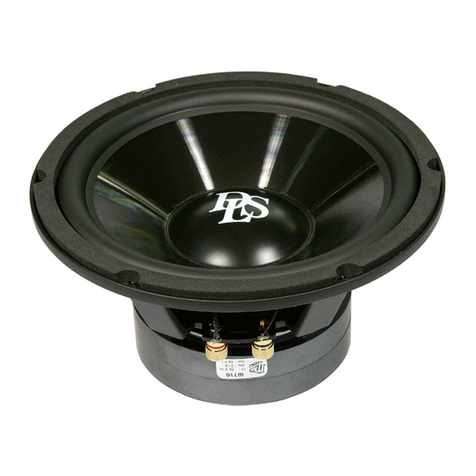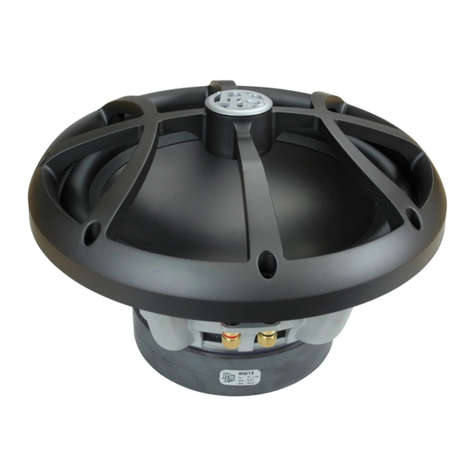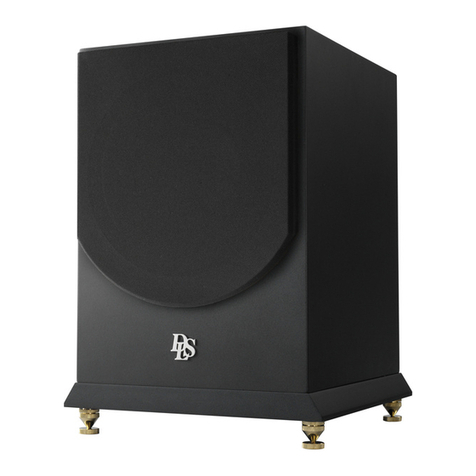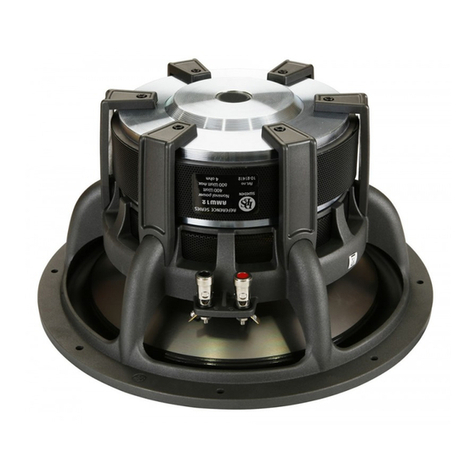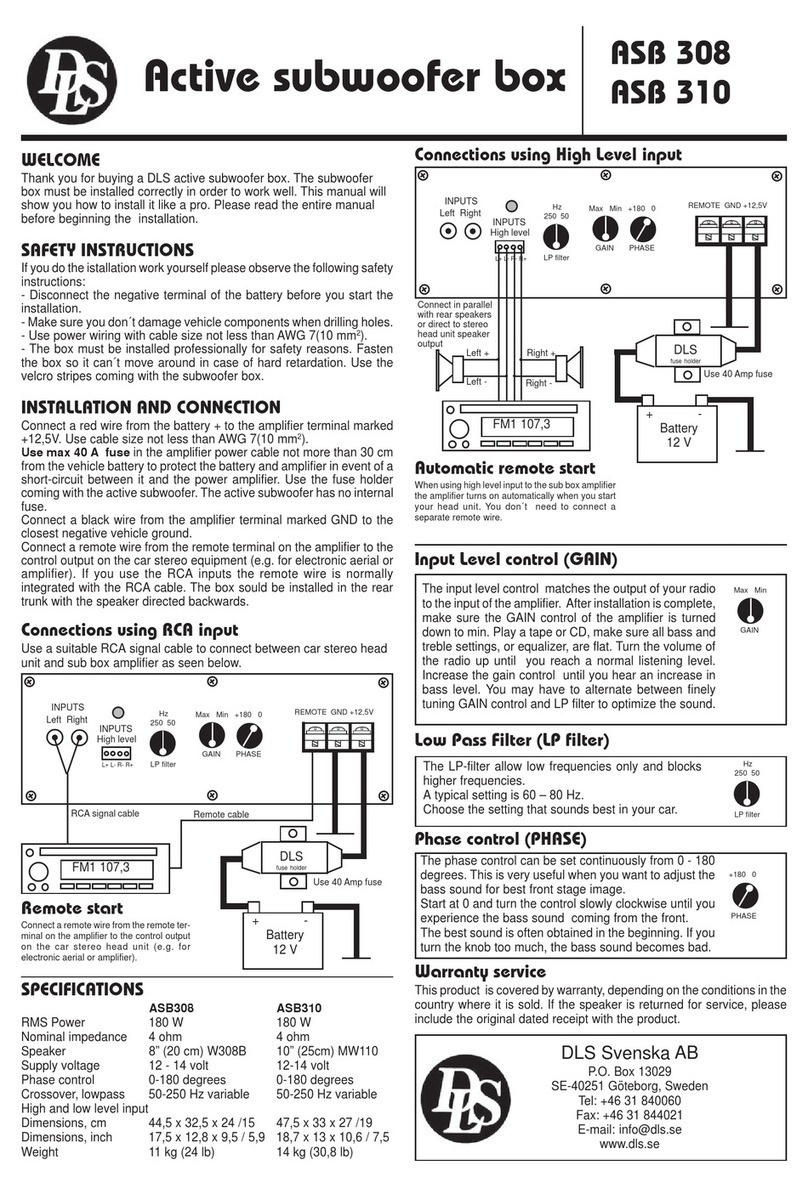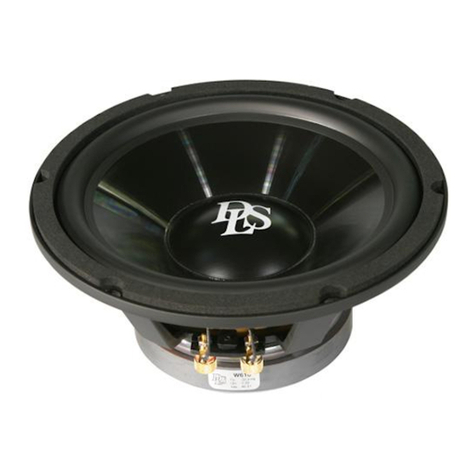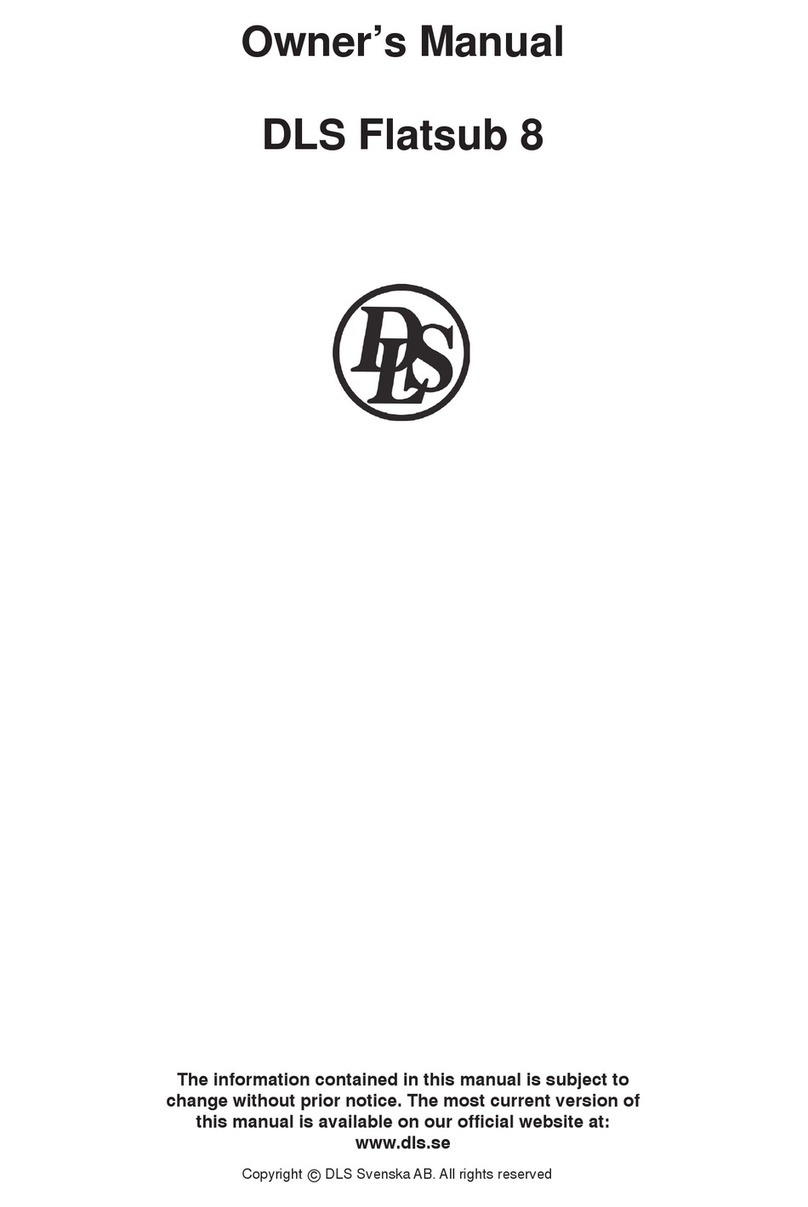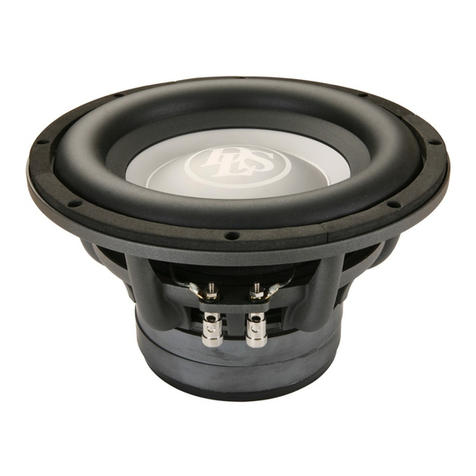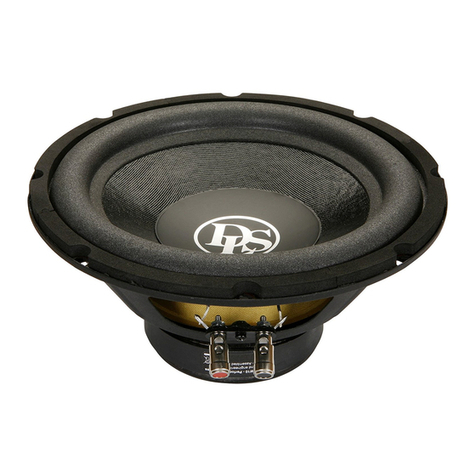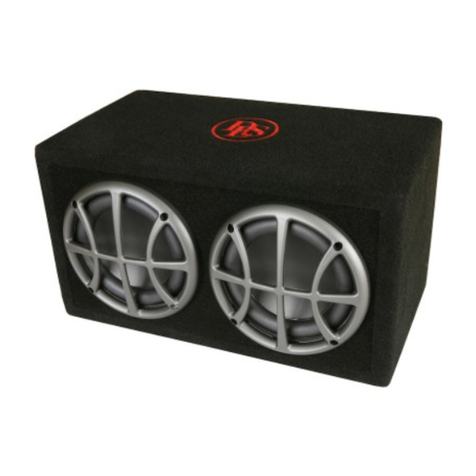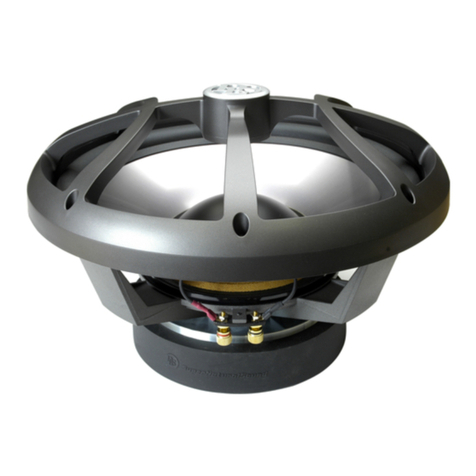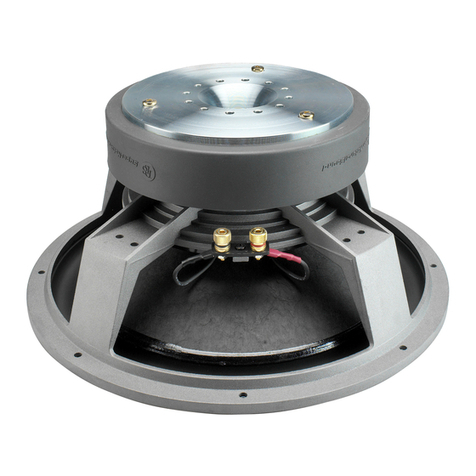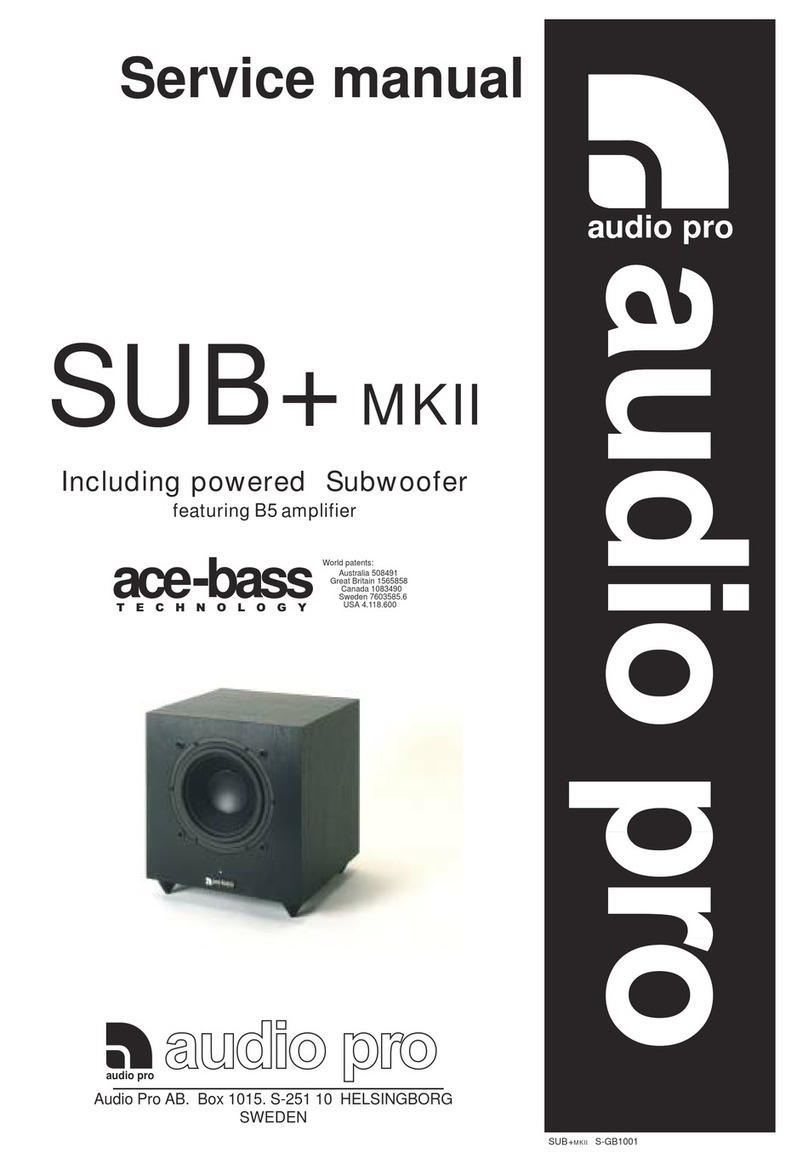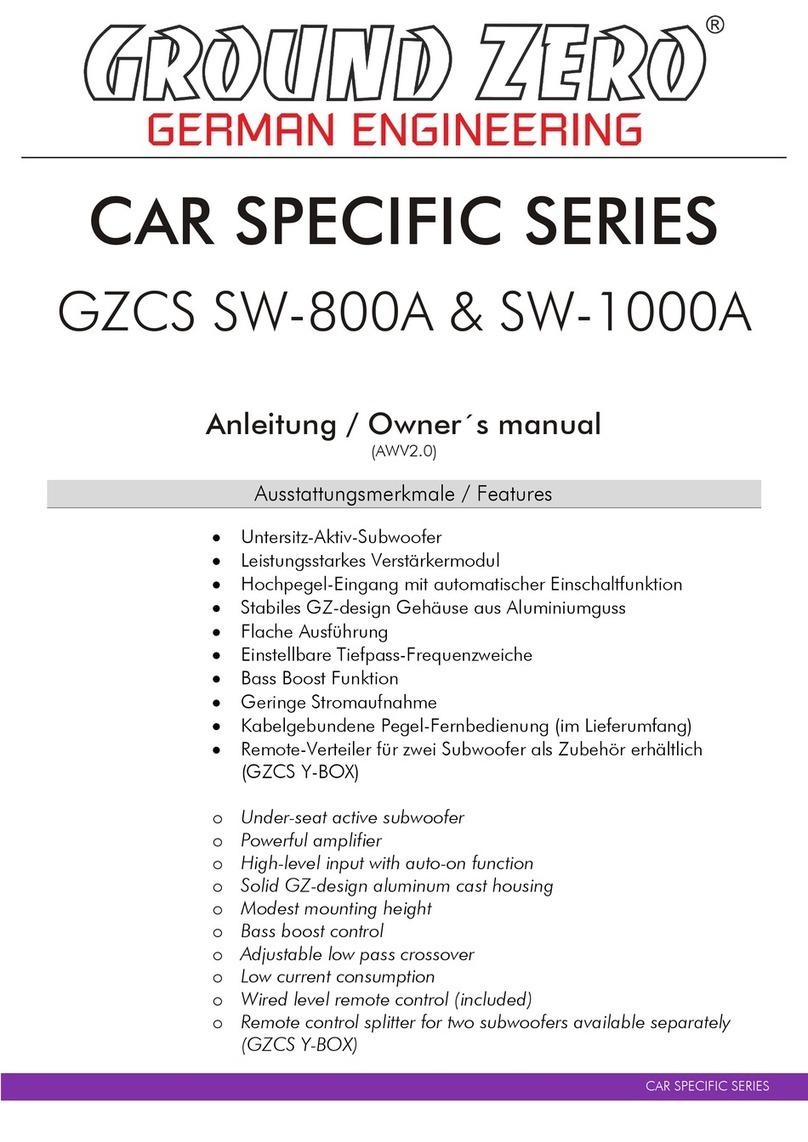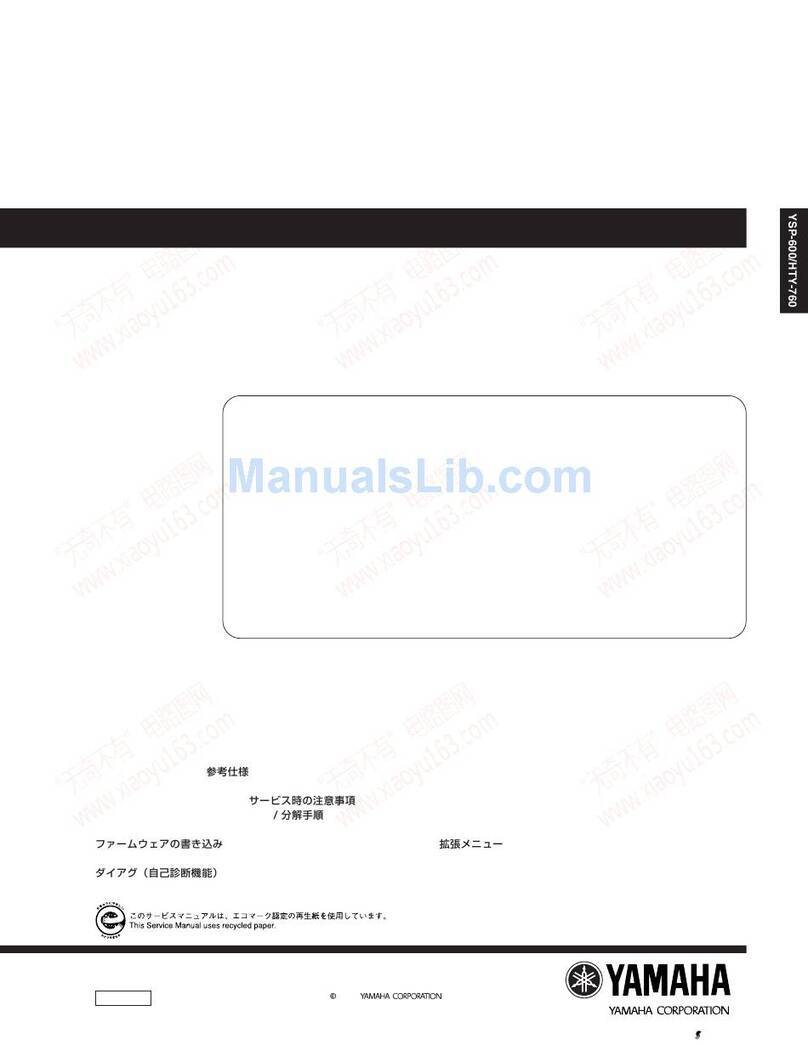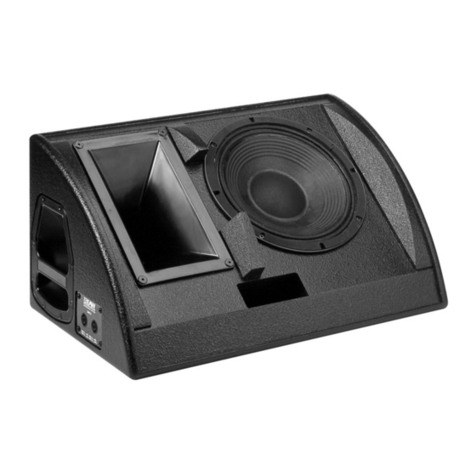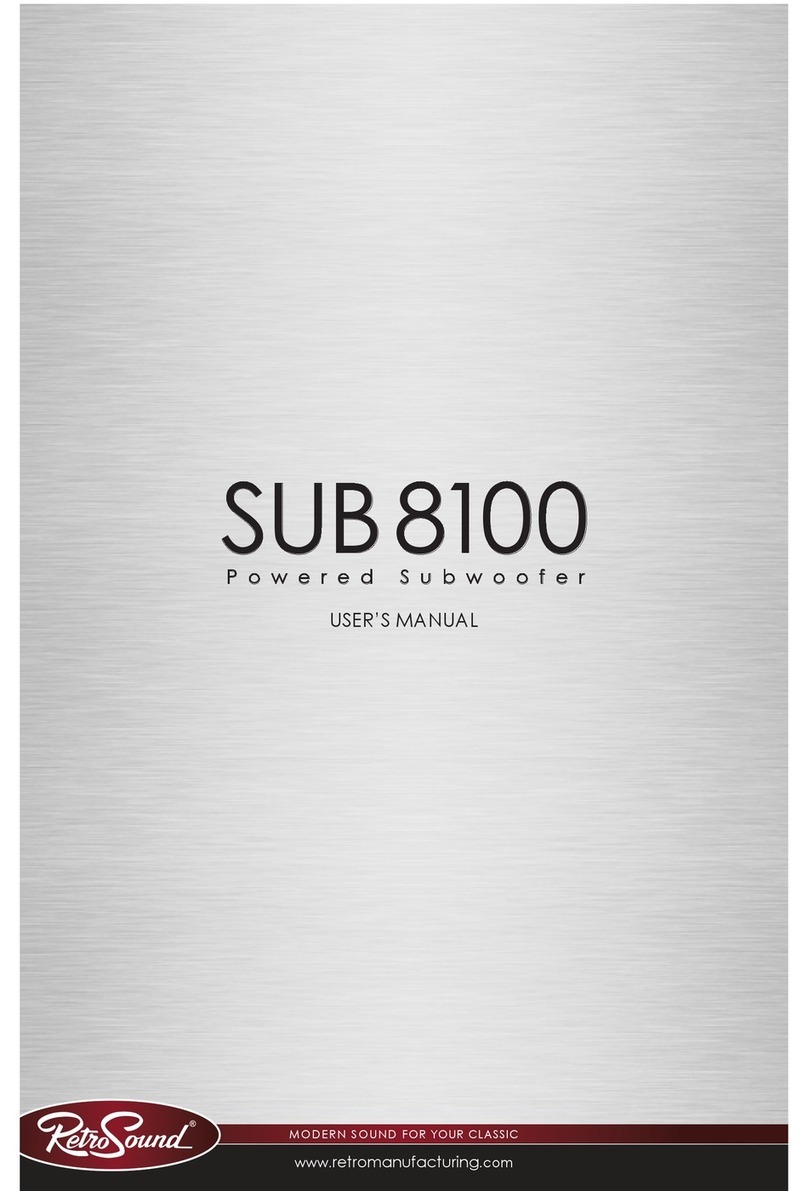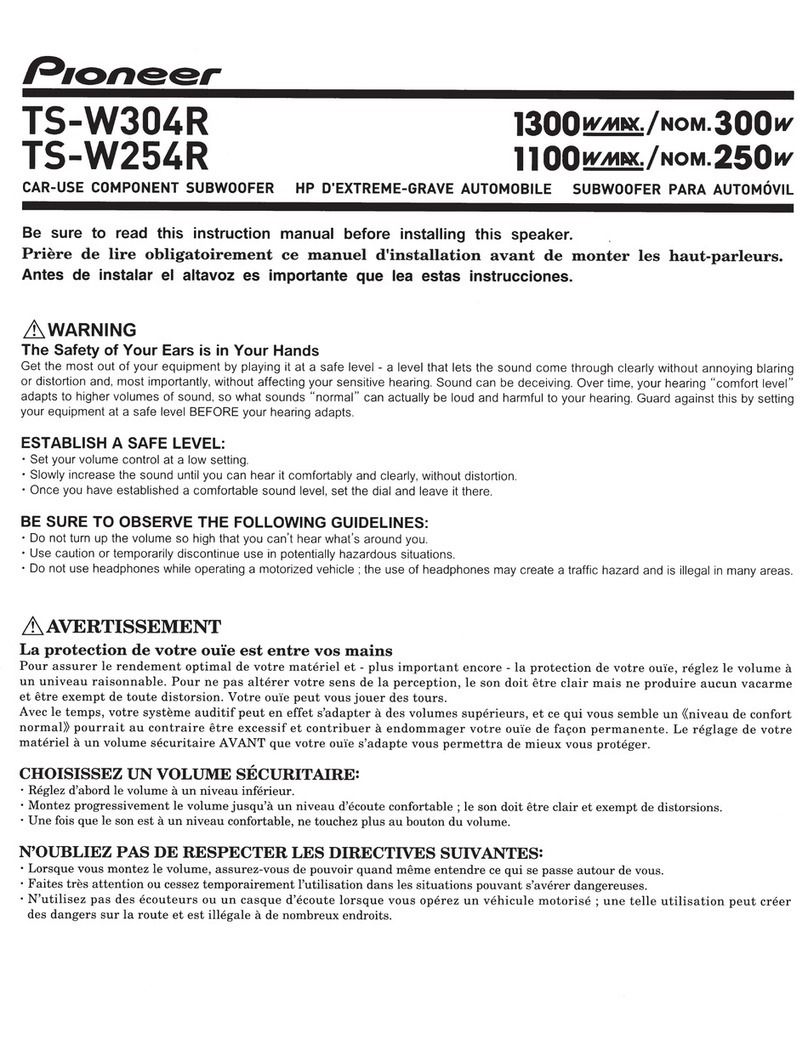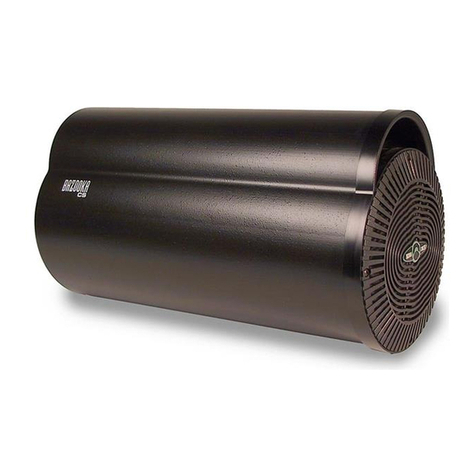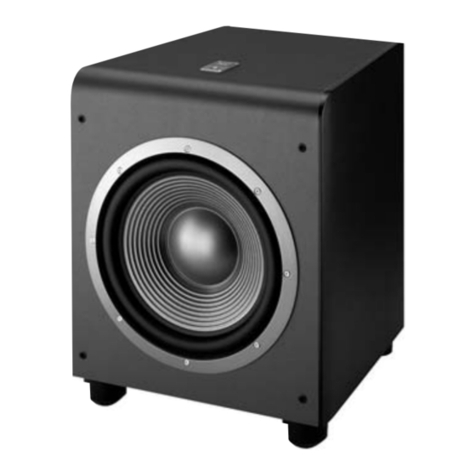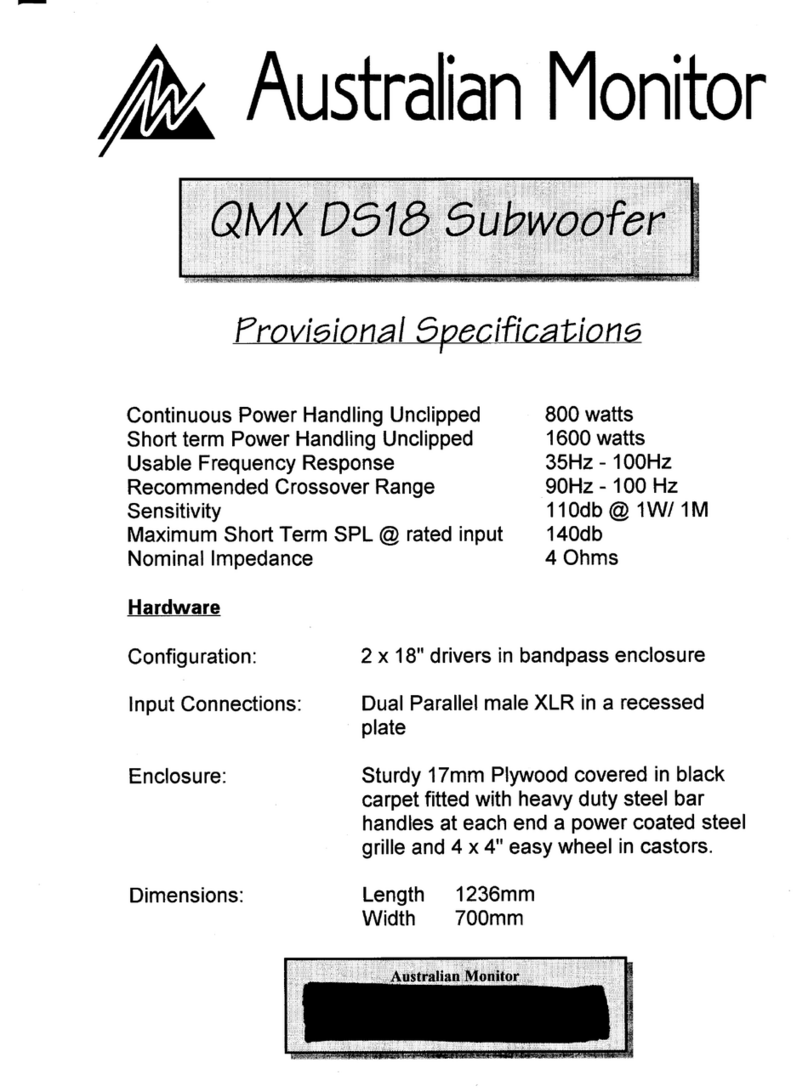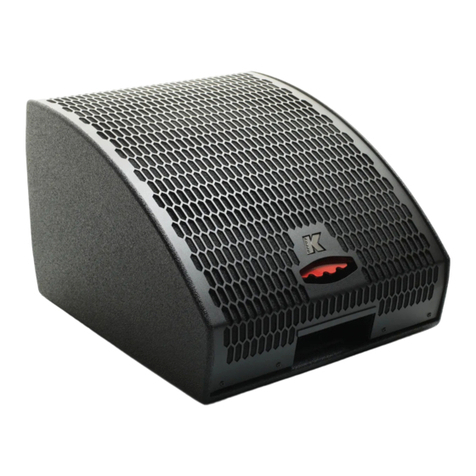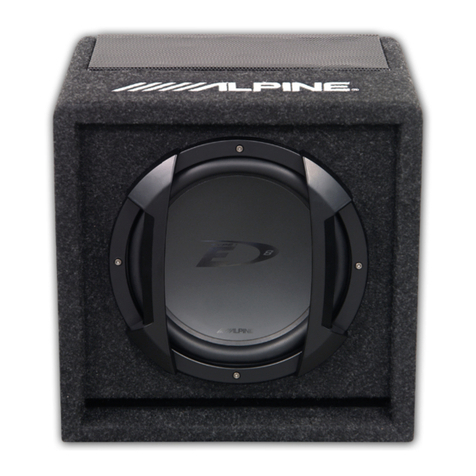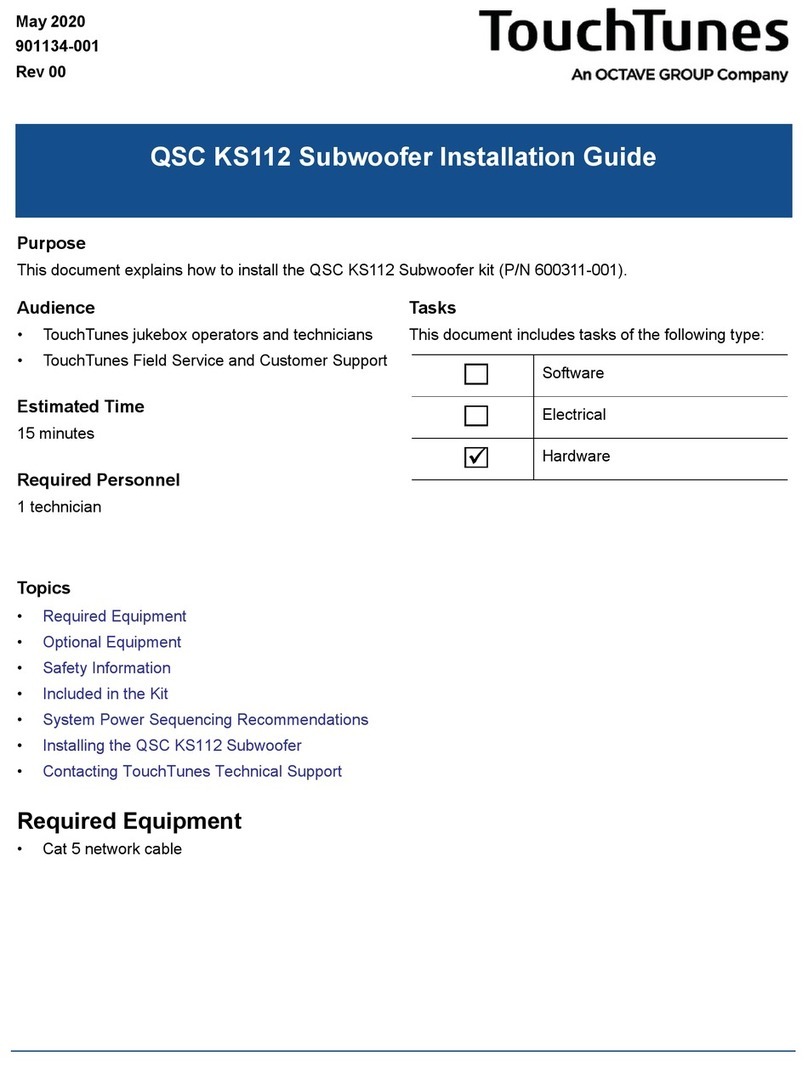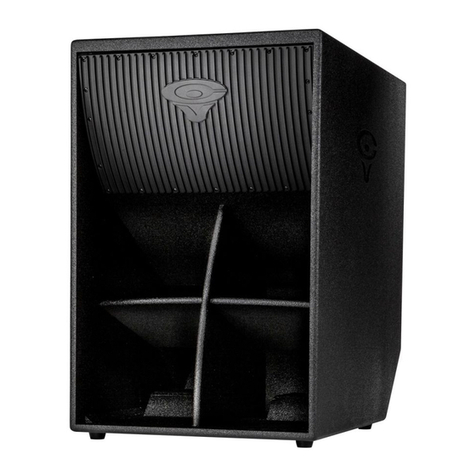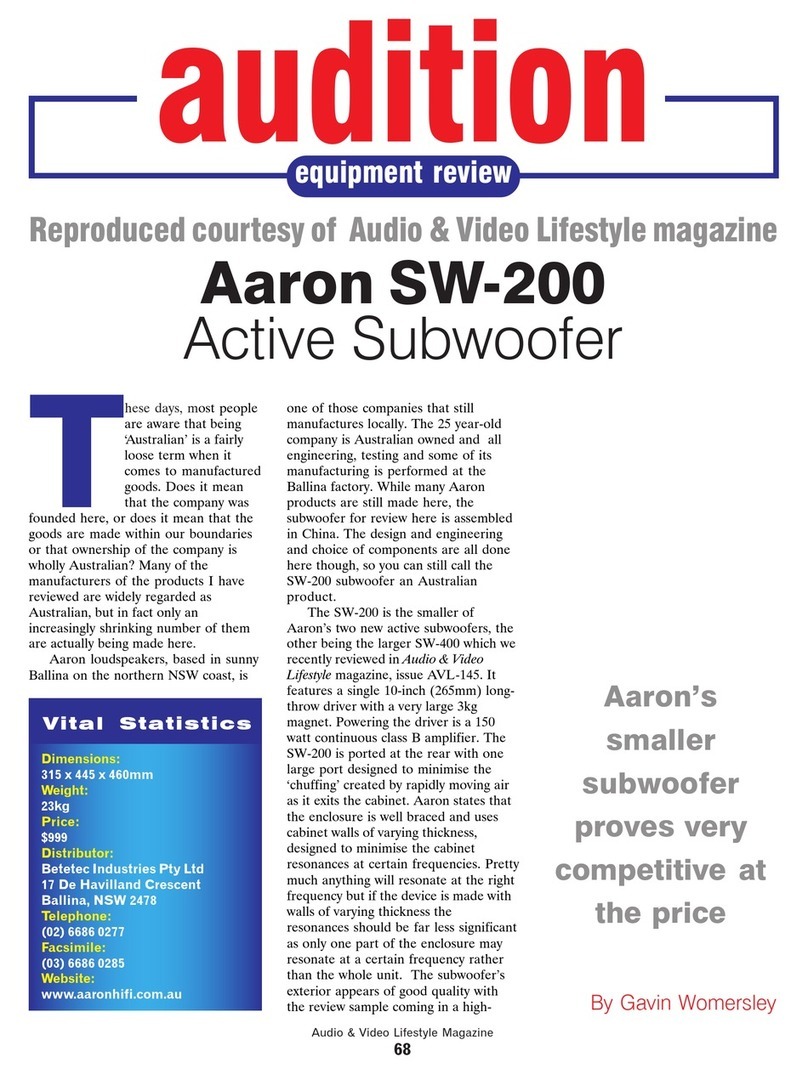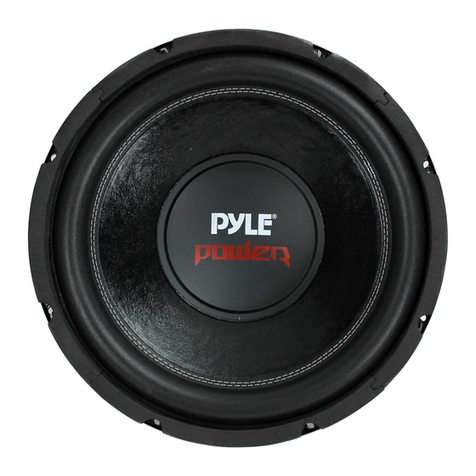DLS RCS10.D2 User manual

User manual
10” Slim Subwoofer

Content
Welcome
Installation
Wiring diagram
Parallel connection
Serial connection
Serial/Parallel connection
Running-in time
DLS support
Enclosure info
Sealed enclosures
Vented enclosures
Damping
Recommended enclosures
Enclosure placement
Calculate enclosure volume
Specifications
Product markings
1
2
2
2-3
3-4
4-5
6
6
6
7
7
7
7
8
8
9
10
Welcome to DLS!
Thank you for buying a DLS Reference RCS 10.D2
subwoofer. For us, it’s all about the sound experien-
ce. We care deeply about sound and construction
quality. In order for your experience to be as optimal
as possible, it is important that you fully read this
manual, preferably before you start your installation.
Keep the manual in a safe and accessible place for
future reference.
Your subwoofer must be installed correctly in order to
work as intended. Make sure you have all necessary
tools nearby before starting and that you are
completely confident in how to process. If you feel the
slightest uncertainty; feel free to take the help of an
experienced installer or a car audio dealer.
Warranty
This subwoofer is covered by warranty, depending on
the conditions in the country where it is sold. If the
speaker is returned for service, please include the
original dated receipt with the product.
Winn Scandinavia AB
Elementvägen 15 - SE-702 27 Örebro - Sweden
www.dls.se
DLS speakers are engineered by DLS Sweden,
a part of:
Designed & Sound tuned in Sweden.
RCS10.D2
DLS REFERENCE
DECLARATION OF CONFORMITY
DLS subwoofers for vehicles are manufactured in
accordance with the EU directive EEC 95/54
(72/245/ EEC) and are marked with the approval
number. They are also marked in accordance with
the WEEE-directive 2012/19/EC. The products are
also produced in accordance with the EU RoHS
directive 2015/863/EU.

Installation
Your RCS 10.D2 subwoofer has a dual 2
ohm voice coil. How to connect the
subwoofer depends on what type of
amplifier you use and it´s optimum load.
The best way to do a correct connection is
to follow the instructions given in the
manual for the amplifier. Most amplifiers
today have built-in low pass crossover and
possibilities to connect your subwoofer in
bridge mode.
When designing a subwoofer system,
consider the following:
Subwoofers being used in the same
enclosure or powered by the same
amplifier should be identical. Do not use
different types of subwoofers that will
play in the same frequency range.
If you are designing a multiple sub-
woofer system, be sure to configure the
subwoofers so that they each receive the
same amount of power from the
amplifier.
Do not mix serial and parallel connected
woofers, voice coils or pairs. If you plan
to use an odd number of subwoofers, be
sure to connect all the woofers in either
series or parallel connection.
For wiring, use high class speaker wires,
min AWG13 (2.5 mm²).
•
•
•
•
Wiring diagram
Warning! Do not expose your amplifier to
loads below the manufacturer’s recommen-
dations. Below you will find some examples
of different connection types. Use the
following examples to determine the
required impedance load of your connec-
tion.
Parallel connection
One 2 Ohm subwoofer = 1 Ohm load
1 Ohm
2 Ohm
2 Ohm
2

Parallel connection
Two 2 Ohm subwoofer = 0.5 Ohm load
0.5 Ohm
2 Ohm2 Ohm
2 Ohm2 Ohm
Serial connection
One 2 Ohm subwoofer = 4 Ohm load
4 Ohm
2 Ohm2 Ohm
Two 2 Ohm subwoofer = 8 Ohm load
8 Ohm
2 Ohm2 Ohm
2 Ohm2 Ohm
3

Serial / Parallel connection
Two 2 Ohm subwoofer = 2 Ohm load
Serial connection
Three 2 Ohm subwoofer = 12 Ohm load
12 Ohm
2 Ohm2 Ohm
2 Ohm2 Ohm
2 Ohm2 Ohm
2 Ohm
2 Ohm2 Ohm
2 Ohm2 Ohm
4

Serial / Parallel connection
Three 2 Ohm subwoofer = 1.33 Ohm load
1.33 Ohm
2 Ohm2 Ohm
2 Ohm2 Ohm
2 Ohm2 Ohm
Serial / Parallel connection
Three 2 Ohm subwoofer = 3 Ohm load
3 Ohm
2 Ohm2 Ohm
2 Ohm2 Ohm
2 Ohm2 Ohm
5

Running-in time
Allow the subwoofer to play for at least
15-20 hours in order to perform at it´s
possibly best. This run-in can be made with
bass tone sweep or with just music. Start at
a moderate volume and increase the
volume step by step during the running in
period. After the 15-20 hour run in session
the performance and characteristics will be
in the correct condition.
Enclosure info
This subwoofer is normally designed for
enclosure mounting. In ”open air” installa-
tions the power handling capacity is
reduced by more than 30% from the
nominal value. We do not recommend
using an ”open air” installation for the
RCS10.D2 subwoofer.
DLS support
For technical assistance, ask your car
audio dealer where the product was sold or
the distributor in your country. You can
always contact the DLS Helpdesk in
Information can also be found on our
WEB-site www.dls.se We follow a policy of
continuous advancement in development.
For this reason, all or part of specifications
& designs may be changed without prior
notice.
Build your enclosure in a stable and airtight
material. MDF-board or particle board,
19-25mm is two good choices. Larger
enclosures must have bracing inside to
avoid vibrations. The enclosure must be
completely airtight. Use sealing compound
in all joints, also around the cable
terminals. The size of the enclosure is
decided and calculated by the
electro-acoustic parameters of the woofer.
DLS recommends that you should choose
the enclosure you will use based on the
type of music you listen to, how much
amplifier power you will use for the
subwoofer and how much space inside the
vehicle you can devote to a subwoofer
enclosure.
Note! RCS10.D2 has a design with “open
voice coil” for improved cooling. This
construction gives the best sound perfor-
mance. To prevent dirt from entering the
voice coil gap, follow these instructions:
• Keep the subwoofer in the plastic bag
until it is time for installation.
• Carefully clean the enclosure inside with
a vacuum cleaner before mounting the
speaker,
General
6

Sealed enclosures constructions is straight
forward and are easy to build. The size is
not critical, but it can’t be too small. The
speaker data such as Fs, Qts, Vas and
X-max decides the size of the enclosure. A
large subwoofer needs larger boxes. Two
woofers need a box of the double size etc.
The enclosure must be completely airtight.
A sealed enclosure provides the most
control over the woofer’s movement, a
woofer mounted in a sealed enclosure will
handle more power than a woofer mounted
in a vented enclosure type.
Sealed enclosures provide more accurate
sonic reproduction than other enclosure
types when mounted inside a vehicle, so
they are well suited to all types of music.
An optimum sealed enclosure is always
smaller than vented enclosures optimized
for a particular subwoofer, so they require
the smallest amount of space inside the
vehicle.
Sealed enclosures
Vented enclosures are built in the same
way as sealed but with a vent hole (port),
normally on the front panel.
Vented enclosures provide normally a
better efficiency in the 40-50 Hz range, but
this efficiency comes at the expense of
sound in the lowest octave (normally below
Vented enclosures
Most enclosures should be damped inside
with synthetic (acoustic) wool or damping
mat (line). In a sealed box we recommend
the use of damping wool and should be
filled with acoustic wool up to 75%.
In a vented enclosure attach the damping
material on the wall opposite from the
subwoofer and port. If you require more
damping is also possible to add sides and
top/bottom. Do not place any damping
material in the port or at it´s openings.
Damping
The recommended enclosure volume
refers to the inner volume and includes the
driver displacement volume.
Recommended enclosures
40Hz), and at the expense of some control
and power handling at the lowest frequen-
cies ( below the ports tuning frequency). If
you are using a small amplifier a vented
box will provide more perceived bass
output from less power. Vented enclosures
are also well suited to a variety of music
types.
Vented enclosures require more of the
builder and the volume and port must be
built more exactly to the specifications. An
optimum vented enclosure is always larger
than the optimum sealed box for the same
woofer and will require more space inside
the vehicle.
Type Volume Qtc F3 Fb
Sealed 10-15L
0.35 - 0.53 cu ft
0.737 - 0.631 57Hz - 56Hz -
Vented 35L
1.23 cu ft
- 34Hz 42Hz
Port
D: 4” / 104mm
L: 16.5” / 420mm
7

Note! The performance of the recommen-
ded enclosures will vary from vehicle to
vehicle. It is more difficult to get a tight and
well defined bass in a SEDAN vehicle
because of the separated space between
the trunk and the passenger compartment.
In smaller vehicles of different models (like
a VW Golf, Peugeot 206, 306, etc. the
enclosure should be installed with the
subwoofer directed backwards or directed
upwards. This way of mounting is valid for
all types of vehicles where the trunk is
incorporated with the inner compartment.
In sedan vehicles where the passenger
Enclosure placement
compartment is separated from the trunk,
one option is to install enclosure with the
subwoofer directed towards the rear seat.
Some cars have an opening in the middle
of the rear seat for storage. You can install
the enclosure behind this opening and
direct speaker through this opening. Be
sure you seal the sides of the enclosure
with additional covering so no pressure will
slip between the opening and your
subwoofer and into the trunk area. The
floor and sides in the trunk area can also
be good alternatives for the enclosure
placement.
In large vehicles like station wagons the
best sound is achieved with the enclosure
installed behind the rear seat with subwoo-
fer directed backwards. Alternatively you
can install the enclosure on one side of the
luggage compartment.
Calculate enclosure volume
When calculating the inner volume of an enclosure you just multiply the width (W) x height (H) x
depth (D). Use measures in dm and you will get the answer in litres.
H
W
UD
LD
Vol = Width(W) x Height (H) x (Upper depth(UD) + Lower depth(LD))
2
A trapeziod box is calculated as this:
8

Specifications
Art no
Size:
Impedance:
RMS power:
MAX power:
Sensitivity:
Voice coil size:
Voice coil material:
Cone material:
Magnet:
Freq. range:
Weight:
CS-RCS10.D2
10”/250mm
2 + 2 Ohm
600W
1200W
85 dB 1W/1M
63.5 mm / 2.5”
4-layer copper voice coil / TIL former
Sandwich Composite / PP dust cap
65 Oz Ferrite
25Hz –500Hz
6.0 kg
Electro-Acoustic Parameters
Fs:
Re:
Qms:
Qes:
Qts:
Cms:
Mms:
BI:
Vas:
Sd:
Xmax:
Vd:
33Hz
3.8 (1.9+1.9) Ohm
6.37
0.51
0.47
0.15mm/N
149.9g
15.4
26.2L
346.4cm²
± 11mm
1.7L
(mm)
252
275
234
115
6
18
97
123
Impedance
vs
Frequency
9
Ohm
50
100
20
10
5
210 Hz 20 50 100 200 500 1K 2K

The crossed-out wheelie bin symbol means that the product, literature and pac-
kaging included must be taken to separate collection at the end of their working
life. Do not dispose of these products as unsorted municipal waste: take them
for recycling. For info on your nearest recycling point, check with your local
waste authority.
This product has been granted with the CE certification mark to show that the
product follows the health, safety, and environmental protection standards for
products sold within the European Economic Area (EEA).
DLS products complies with the relevant provisions of the RoHS
Directive for the European Union. In common with all Electrical
and Electronic Equipment (EEE) the product should not be
disposed of as household waste. Alternative arrangements may
apply in other jurisdictions.
aideMeliboMnaeporuEehtforentraplabolgasiSLD
Association, an organisation that focus on promoting the
custom made mobile media installations to consumers.
Product markings
We follow a policy of continuous advancement in development. For this reason all or part of
specifications & designs may be changed without prior notice. We reserve for possible typos,
factual or numeric errors that may have been printed on any products, package designs,
user manuals and/or other included accessories.
10

Table of contents
Other DLS Subwoofer manuals
